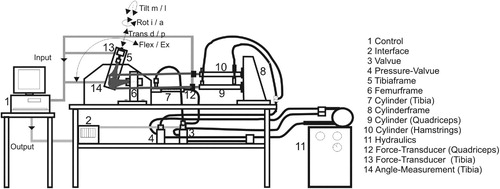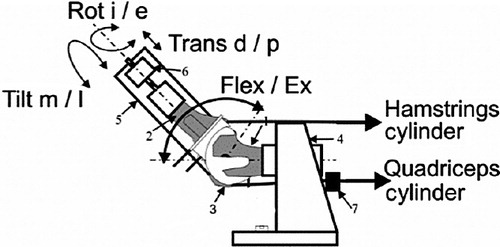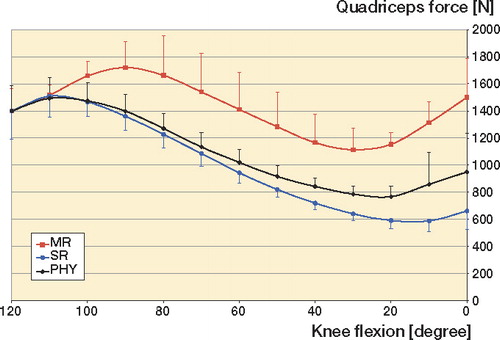Figures & data
Figure 1. Schematic view of the test set-up according to Stukenborg-Colsman et al. (Citation2002) and Ostermeier et al. (Citation2008).

Figure 2. Detailed schematic side view of the applied forces and movements. The specimen was brought from a position of 120° of flexion to full extension by applying force on the quadriceps cylinder, providing a constant joint extension moment (31 Nm) resisted by the swing arm. An additional flexion force was applied by the hamstrings cylinder. 1) femur, 2) tibia, 3) patella, 4) femur frame 5) swing arm, 6) strain gauge, and 7) load cell.

Table 1. Maximum quadriceps force to generate an extension moment of 31 Nm under physiological knee conditions, after implantation of a single or multiple femoral radius design
Figure 3. Quadriceps forces to generate an extension moment of 31 Nm under physiological knee conditions (PHY), and after implantation of a single (SR) or multiple femoral radius design (MR) from 120° of knee flexion to full extension (whiskers represent SD). Mean values of 3 repetitions.

Table 2. Minimum quadriceps force to generate an extension moment of 31 Nm under physiological knee conditions, after implantation of a single or multiple femoral radius design
Table 3. Quadriceps force to generate an extension moment of 31 Nm under physiological knee conditions, after implantation of a single or multiple femoral radius design at specific knee flexion angles